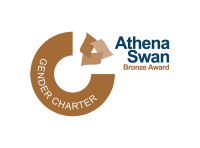
About our scanner
SKYSCAN 1273 is a benchtop microCT scanner.

System specifications:
- smallest isotropic voxel size: < 3 μm (high resolution in detector, no filter),
- maximum scanning diameter is 250 mm with 2 partially offset positions; maximum scanning length is 250 mm by automatically connected partial scans,
- X-ray source with continuously adjustable 40-130 kV peak energy, 39 W maximum power, 300 μA maximum tube current, <5 μm spot size, air cooled; 7 energy filter options (no filter, 0.5 mm Al, 1 mm Al, 1 mm Al + 0.2 mm Cu, 0.5 mm Cu, 1 mm Cu, 2 mm Cu),
- distortion-free 6Mp (3072 x 1944 pixels) active pixel flat-panel detector, 75 μm square pixels, full format, 2x2 or 4x4 binning, >20 frames/second in full resolution, 14-bit digitalization,
- four axis precision object manipulator based on stepping motors with microstepping drives.
Workstation configurations:
- Dual Intel Xeon Gold 6128: 3.4GHz, 10.4GT/s, 2666MHz memory access,
- 128GB, 2666MHz DDR4 memory,
- 8 GB NVIDIA® Quadro® Graphical card,
- 16 TB (4x4 TB) SAS HDD in RAID 0 for data,
- 512GB SolidStateDrive for operating system and software,
- GPU-accelerated reconstruction produces results as BMP/JPEG/TIFF/PNG slices as well as in DICOM format and can run in parallel with the scanning of the next sample,
- reconstruction software “NRecon” with GPU acceleration,
- visualization software “DataViewer”,
- format Converter “TConv” and “DICOM converter”,
- 2D/3D morphological analysis software “CTan”,
- realistic visualization by surface rendering “CTvol”,
- Realistic volume rendering software “CTvox”.
For more information, please visit https://www.bruker.com/en/products-and-solutions/microscopes/3d-x-ray-microscopes/skyscan-1273.html.
Application for scanning time
We recommend that potential users contact the Lab and discuss the feasibility of their project with the scanning technician before submitting an application. Applications are reviewed by the committee and applicants are subsequently notified about the outcome of the review process.
Submit an application for micro-CT scanning
Services and pricing
Services and pricing are detailed on the Laboratory Fees and Charges webpage.
What happens next?
Once the application is accepted, users will be notified about the number of hours granted, dates for scanning and estimated costs, and will be asked to sign an agreement form.
We ask users to supply the samples with labels (name, address, project number). The Paleolab will not be responsible for collecting samples from their original location and returning them, users should make the appropriate arrangements.
Data will be stored for up to 2 weeks. Users should ensure that data generated during microCT scanning is stored in their own device. As such, we recommend users to bring a hard drive with enough space for accommodating microCT scans (i.e., raw data for one acquisition might represent between 2 and up to 20 GB. In the case that users were granted access to scan material from the Duckworth collection, we request that a copy of the scans be handed over to the curator (Dr Trish Biers).
Users should pay all costs within 30 days of invoicing.
Please contact the Lab for further information.

